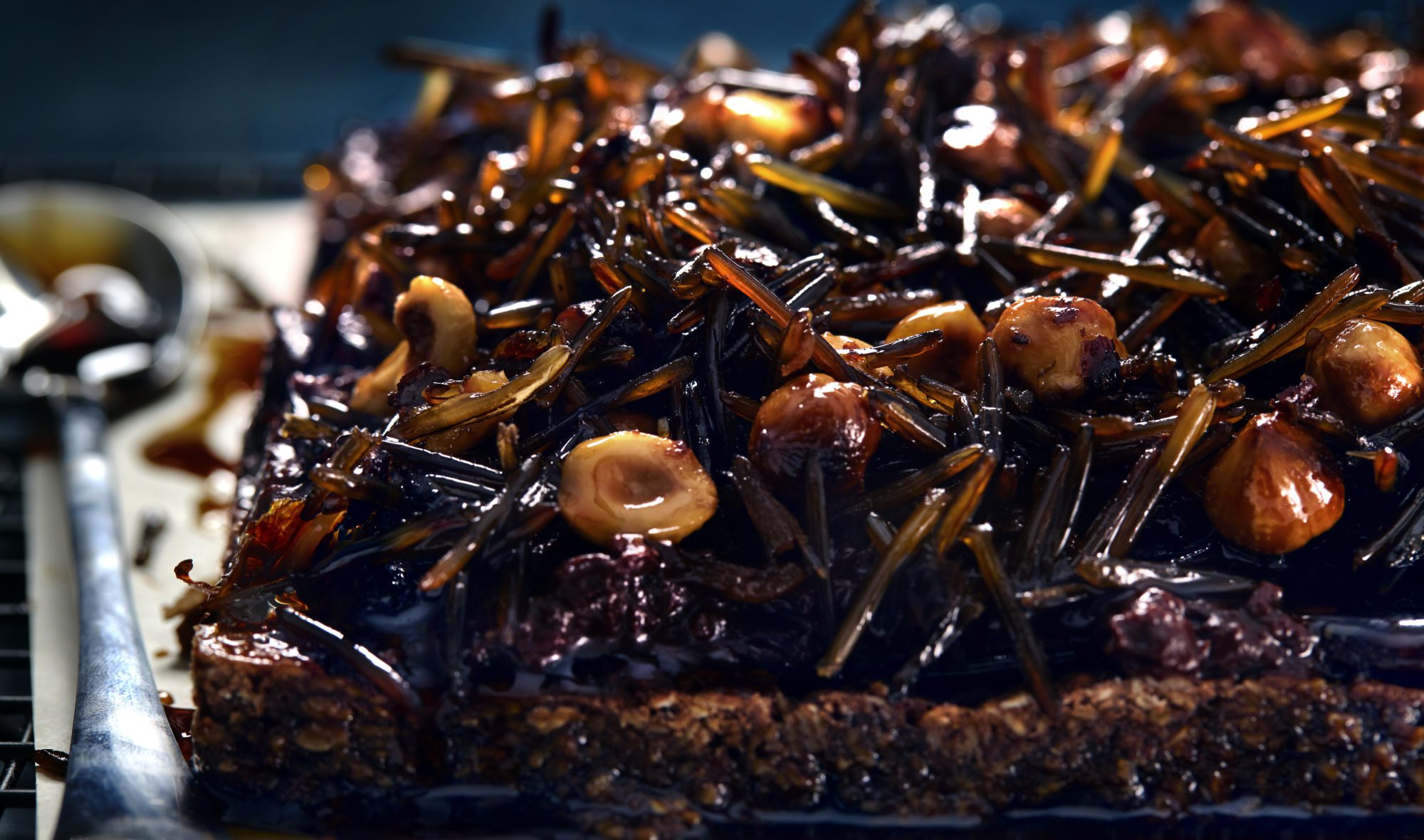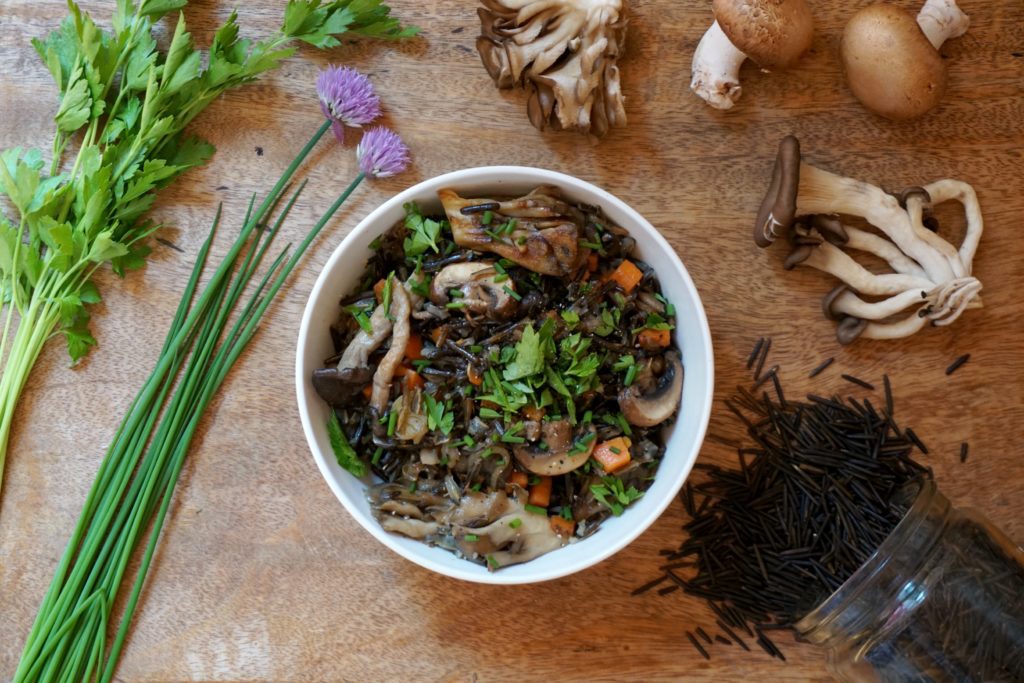
Join PN Level 2 for less than $9 USD/day! Affordable monthly payments now open.

Wild rice is a flavorful gluten-free whole grain native to North America. When cooked, the long, ebony-colored grains butterfly open to reveal a starchy interior. Cooked wild rice is deliciously chewy in texture, with a rich, nutty flavor with notes of black tea. Wild rice is a nutritious complex carbohydrate and is a relatively good source of manganese, zinc, and phosphorus.
Wild rice is a tasty and rather fancy gluten-free whole grain native to North America. For Indigenous cultures in North America, wild rice was an important dietary staple as well as a ceremonial food.
Wild rice grows in shallow freshwater lakes and gentle streams and is harvested primarily by canoe. Also called “knocking the rice”, wild rice harvesting is performed with long sticks that are used to draw in blades of wild rice grass towards the edge of the canoe so they can be threshed with another stick, causing the grains to loosen and fall into the canoe for collection. After the harvest, wild rice must be processed in several steps before it is ready for consumption.
First, the kernels are dried. Shortly after harvesting, the wet kernels are spread out on trays and exposed to sun and air until they are dry. Then the wild rice is parched, or roasted, in large cast iron pots. This step further reduces the moisture content of the rice, ensuring better preservation, and it also loosens the hull from the grain, which is removed in future steps. Once roasted, the grains are then hulled and winnowed. Traditionally, hulling was facilitated by stomping or dancing on the kernels until the husks loosened. During the winnowing process, the stomped rice is shaken until all the dry husks fly off, leaving only the wild rice grains.
This entire process can take days and a lot of muscle. While most commercial wild rice companies now use machines to perform these steps, many smaller artisanal wild rice purveyors still follow these traditional methods to this day.
Wild rice grains are long, thin, and ebony-colored. When cooked, the grains often split down the middle, butterflying open to reveal their starchy interior.
Cooked wild rice is pleasantly chewy and starchy, and has a lovely roasted, nutty flavor with hints of black tea. Unlike many other kinds of rice that provide a neutral blank canvas upon which to layer flavors, the taste of wild rice is a force on its own and is complemented by other bold, earthy flavors.
One cup of cooked wild rice (about 164g) has 166 calories, 6.5g protein, 0.6g of fat, 35.0g of carbohydrates, 3.0g fiber, and 1.2g sugar. Wild rice is a relatively good source of manganese, phosphorus, and zinc.
Wild rice can be found in most good quality grocery stores, health food stores, and bulk food stores.
Shop at stores with high turnover and, if shopping in bulk, covered bins. Choose packages of wild rice that contain grains with an even dark brown color. If you are able to smell the product, it should smell like a toasty mix of dried grass, walnuts, and black tea. Although this is rare in commercial products, avoid packages of wild rice that show evidence of humidity or mold.
Also note that wild rice is commonly sold in packages mixed with white rice, sometimes with additional flavoring agents added. To ensure you are buying a pure product, read the ingredients. Wild rice should only contain wild rice.
Uncooked wild rice is highly shelf-stable and will keep almost indefinitely in an airtight container, preferably in a dark cupboard.
Cooked wild rice will keep in the refrigerator for up to a week, and in the freezer for up to six months.
Wild rice must be cooked in order to be eaten.
Here is a simple method of preparation:
Take 1 cup of wild rice, 4 cups of water, and half a teaspoon of salt, and pour them all into a medium saucepan. Place on the stove over medium-high heat, bring to a boil, and then cover and reduce to a simmer, and leave like this for 40-60 minutes. The rice is cooked when most of the water is absorbed and the rice is swollen, with some grains butterflying open. Drain off any excess liquid, and then cook for an additional minute over low heat to evaporate the remaining liquid, if any. Fluff the rice with a fork, and then eat! Makes about 4 cups.

Wild mushrooms and wild rice are a delicious match - both are savory and slightly nutty and shine when seasoned with sage, fresh parsley, and fresh chives.
Prep Time: 10 minutes Cook Time: 60 minutes Yield: 2-4 servings
First, cook the wild rice: Add water or broth to a pot and bring to a boil. Add wild rice, cover the pot, and cook until rice is soft (most of the kernels will have split), about 40-45 minutes. Simmer or drain off any excess liquid. Set aside.
Add butter (or coconut oil) to a large skillet over medium-high heat. Once it’s sizzling, add shallots, garlic, and salt, and cook until softened and fragrant, about 2 minutes. Then, add carrot, assorted mushrooms, and sage. Cook until softened, about 10 minutes.
Add the cooked wild rice to the cooked vegetable mixture and toss to heat. Once warmed, remove from heat and add parsley and chives; toss to combine. Top with freshly cracked pepper, and serve.
Precision Nutrition’s Encyclopedia of Food expands every single month as we highlight new foods and showcase beautiful food photography. If you’d like to stay up to date, simply click this link. From there, we’ll send you a FREE copy of our recipe book. We’ll also let you know when new and delicious foods are added to the site.
Wild rice is a flavorful gluten-free whole grain native to North America. When cooked, the long, ebony-colored grains butterfly open to reveal a starchy interior. Cooked wild rice is deliciously chewy in texture, with a rich, nutty flavor with notes of black tea. Wild rice is a nutritious complex carbohydrate and is a relatively good source of manganese, zinc, and phosphorus.